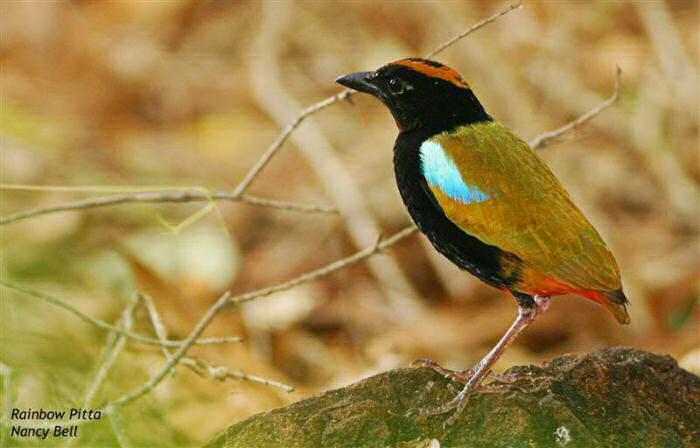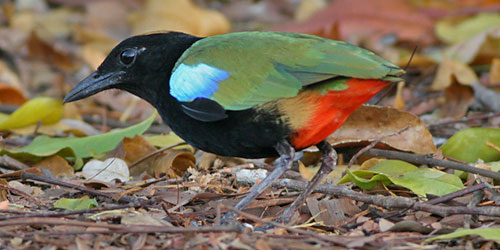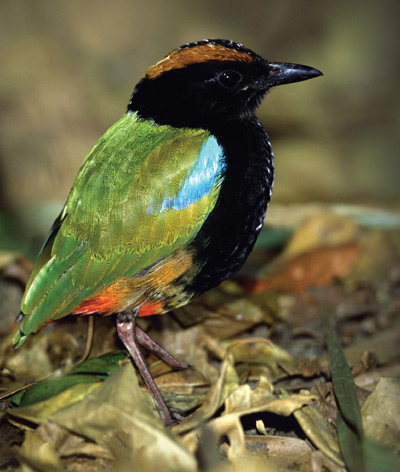
Pitta iris
TAXONOMY
Pitta iris Gould, 1842, N. Australia.
OTHER COMMON NAMES
English: Black-breasted pitta; French: Brиve iris; German: Rogenboenpitta;
Spanish: Pita Arco Iris.
PHYSICAL CHARACTERISTICS
5.9–6.9 in (15–17.5 cm); 1.9–2.5 oz (54–72 g) Black head and
breast with brownish band above eye to back of head. Red under
tail. Back, wings, and tail green with lighter green on upper
wing.
DISTRIBUTION
Northern Territory, Australia.
HABITAT
Found in a variety of forest-like habitats, primarily monsoon
forest, but also gallery forest along rivers, mangrove edges, eucalypt
forest, and scrub; at low elevations along coast.
BEHAVIOR
Primarily terrestrial, occurring alone or in pairs. Birds defend
territories and remain on these territories throughout the year.
Calling primarily by males, and may be accompanied with a “bowing” display, in which males from adjacent territories assume
an upright position then lower their breasts nearly to the
ground in slow motion. These displays are believed to maintain
territorial boundaries. The species also performs a “wing-flicking”
display, perhaps used to alarm or distract predators, and a
“ducking posture” that may be used to avoid detection by
predators.
FEEDING ECOLOGY AND DIET
Feeds by foraging in leaf-litter of the forest floor. Food items
include spiders, insects, insect larvae, centipedes, snails, earthworms,
small frogs, skinks, and Carpentaria palm fruits. Diets
vary seasonally, with earthworms dominating during the wet
season.
REPRODUCTIVE BIOLOGY
Breeds October to March. Domed nest is either on the ground
or up to a height of 10 ft (3 m). Nest constructed primarily
from small twigs and sticks, but also leaves, bark, ferns, vines,
and palm fronds. Clutch size usually three to four. Eggs glossy
white or creamy-white with dark purple or brownish spots over
purple-gray markings, most numerous on widest end. Female
and male share nest construction, incubation, and brooding
and provisioning of young. Incubation period is 14–15 days,
nestling period 14 days.
CONSERVATION STATUS
Not threatened; common throughout much of its range where
HABITAT
is suitable.
SIGNIFICANCE TO HUMANS
None known.
Photo Gallery of - Rainbow pitta




 Animalia Life
Animalia Life